
Organic Electronics & Materials Research Laboratory
Department of Physics & Astrophysics, University of Delhi, India
With the rapid rise in temperature due to global warming and to reduce a huge amount of energy expenditure on lighting and air-conditioning systems, the control of the heat and visibility through the windows of buildings or vehicles, is now desirable objective for the researchers. A smart window offers such control of solar radiations transmitting through it. Low power operating electrochromic materials are now the most appropriate choice, offering dynamic control in response to the environmental conditions. The term electrochromism evidently defines itself, “electro” refers to electrical voltage/current and “chromism” is related to color change. Thus electrochromism is the phenomenon to evoke bleach or alter color in response to small applied voltage or current perturbation. An electrochromic material is capable of generating new optical transitions based upon electrochemically induced redox transitions. The loss or gain of electrons in the redox transition is usually accompanied by intercalation/deintercalation of ions, followed by insertion/extraction of oppositely charged ions from electrolyte maintaining charge neutrality. Generally, the polyaniline (PANI) composites with metal oxides or other carbon materials are known to have improved electrochemical stability owing to the secondary interaction among the constituting elements of the composite. Interaction among the components of the composite can be enhanced by linking materials through a binding agent and surface modification process is a useful method for attaching a particular group to a particular material. The covalent attachment, hydrogen bonding, electrostatic interactions and π-π stacking, etc. can result to a better charge transport between organic-inorganic phases, as reported and may also be helpful to attain better EC performance. We work on the hydrogen bonded composites of PANI with oxides like NiO, ZnO and organic materials like graphene. NiO in particular is anodically coloring in same potential window as that of polyaniline. With the consideration that stability could be further improved by making composite with electron rich species, another hydrogen bonded composite of PANI with ZnO (n-type) is synthesized. Graphene quantum dots bear large number of electron rich oxygenated groups on its surface which can be easily attached with aniline monomer. PANI-fGQD composite has been synthesized without using any binding agent. We evaluate the devices based on these materials in the light of electrochromic parameters like contrast, response time, stability. Charge transport mechanism for electronic conduction is investigated using temperature dependent dc conduction, while ionic transport is analyzed in light of electrochemical impedance spectroscopy. Futhermore, new materials like alkyl viologens have been explored for industrial grade devices.
Published and ongoing work
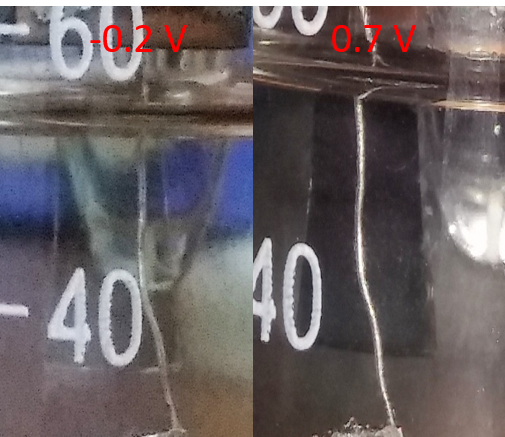
Bleached and coloured state of PANI-fNiO
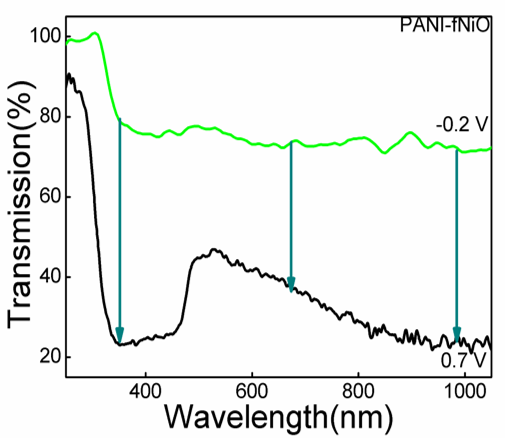
UV-Vis spectra of PANI-fNiO in coloured and bleached state
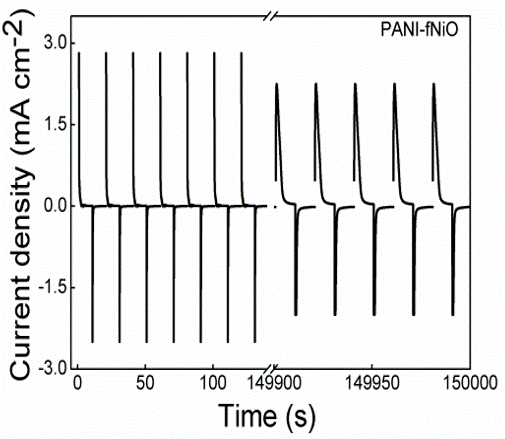
Stability of PANI-fNiO
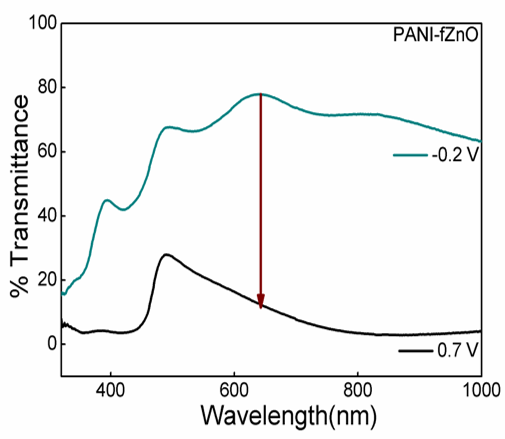
UV-Vis spectra of PANI-fZnO in coloured and bleached state
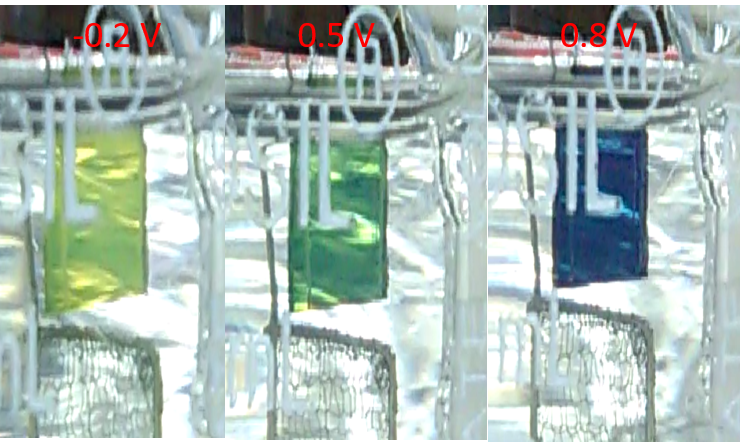
Colored state of PANI-fGQD (polyaniline-functionalized graphene oxide quantum dots) at different applied potentials

CV of PANI-fGQD at different scan rates